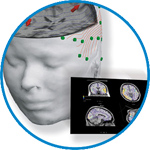- Home
- About ANT
-
Products

asa
asa is a highly flexible EEG/ERP and MEG analysis package with a variety of source reconstruction, signal analysis and MRI processing features.
.jpg)
eego mylab
The new frontier in multimodal brain research. With up to 16 kHz sampling rate, 256 EEG channels and unique software features, eego mylab gives you an unprecedented in-depth understanding of the human brain.

eego sports
eego sports offers complete freedom to collect high-density EEG data, bipolar EMG signals, and a variety of physiological sensor data, wherever and whenever required, with publish quality data in less than 15 minutes!

waveguard net
The waveguard net sets a new standard for research applications requiring high-density EEG data acquisition with quick preparation time, high flexibility, and subject comfort.

visor2
Our new and upgraded visor2 solutions integrate all the latest technologies for navigated rTMS, dual-coil navigation support, EEG-TMS recordings and pre-surgical evaluation for the highest quality in research and clinical procedures.

powerMAG ANT
The PowerMAG ANT 100 rTMS stimulator is designed for the specific needs of high-end TMS applications. Powerful high-frequency TMS as well as high precise single pulse and repetitive pulse protocols are combined in one single device.

xensor
xensor offers the solution for digitization of 3D electrode positions. xensor takes care of the whole procedure; it records, visualizes and stores positions acquired with a dedicated digitizer.

waveguard original
waveguard original is the cap solution for EEG measurements compatible with fMRI, MEG and TMS system. Use of active shielding guarantees performance in even the most demanding environments.

waveguard connect
waveguard connect EEG caps are a perfect match for hospitals and institutes aiming at reliable EEG, maximum uptime and great patient comfort! For optimal signal quality, the electrodes are made of pure, solid tin.

waveguard touch
waveguard touch is a dry electrode EEG cap. The unique Ag/AgCl coated soft polymer electrodes provide stable, research-grade EEG signals while maintaining subject comfort. The combination of these innovative dry electrodes and the industry-leading waveguard cap makes waveguard touch the best solution for dry EEG.

smartmove
smartmove allows planning of a complete TMS session ahead by defining stimulation sites based on anatomical MRI information and functional information like fMRI, PET or EEG/MEG.
Stay - References
- Support
- Events
- News
- Contact Us
You are here
Source reconstruction based on subdural EEG recordings adds to the presurgical evaluation in refractory frontal lobe epilepsy.
Source reconstruction based on subdural EEG recordings adds to the presurgical evaluation in refractory frontal lobe epilepsy.
OBJECTIVE:
In presurgical investigations of refractory frontal lobe epilepsy, subdural EEG recordings offer extensive cortical coverage, but may overlook deep sources. Electrical Source Localization (ESL) from subdural recordings could overcome this sampling limitation. This study aims to assess the clinical relevance of this new method in refractory frontal lobe epilepsy associated with focal cortical dysplasia.
METHODS:
In 14 consecutive patients, we retrospectively compared: (i) the ESL of interictal spikes to the conventional irritative and seizure onset zones; (ii) the surgical outcome of cases with congruent ESL and resection volume to cases with incongruent ESL and resection volume. Each spike type was averaged to serve as a template for ESL by the MUSIC and sLORETA algorithms. Results were superimposed on the corresponding pre and post-surgical MRI.
RESULTS:
Both ESL methods were congruent and consistent with conventional electroclinical analysis in all patients. In 7 cases, ESL identified a common deep source for spikes of different 2D localizations. The inclusion of ESL in the resection volume correlated with seizure freedom.
CONCLUSIONS:
ESL from subdural recordings provided clinically relevant results in patients with refractory frontal lobe epilepsy.
SIGNIFICANCE:
ESL complements the conventional analysis of subdural recordings. Its potential in improving tailored resections and surgical outcomes should be prospectively assessed.

 Read more
Read more.jpg)




